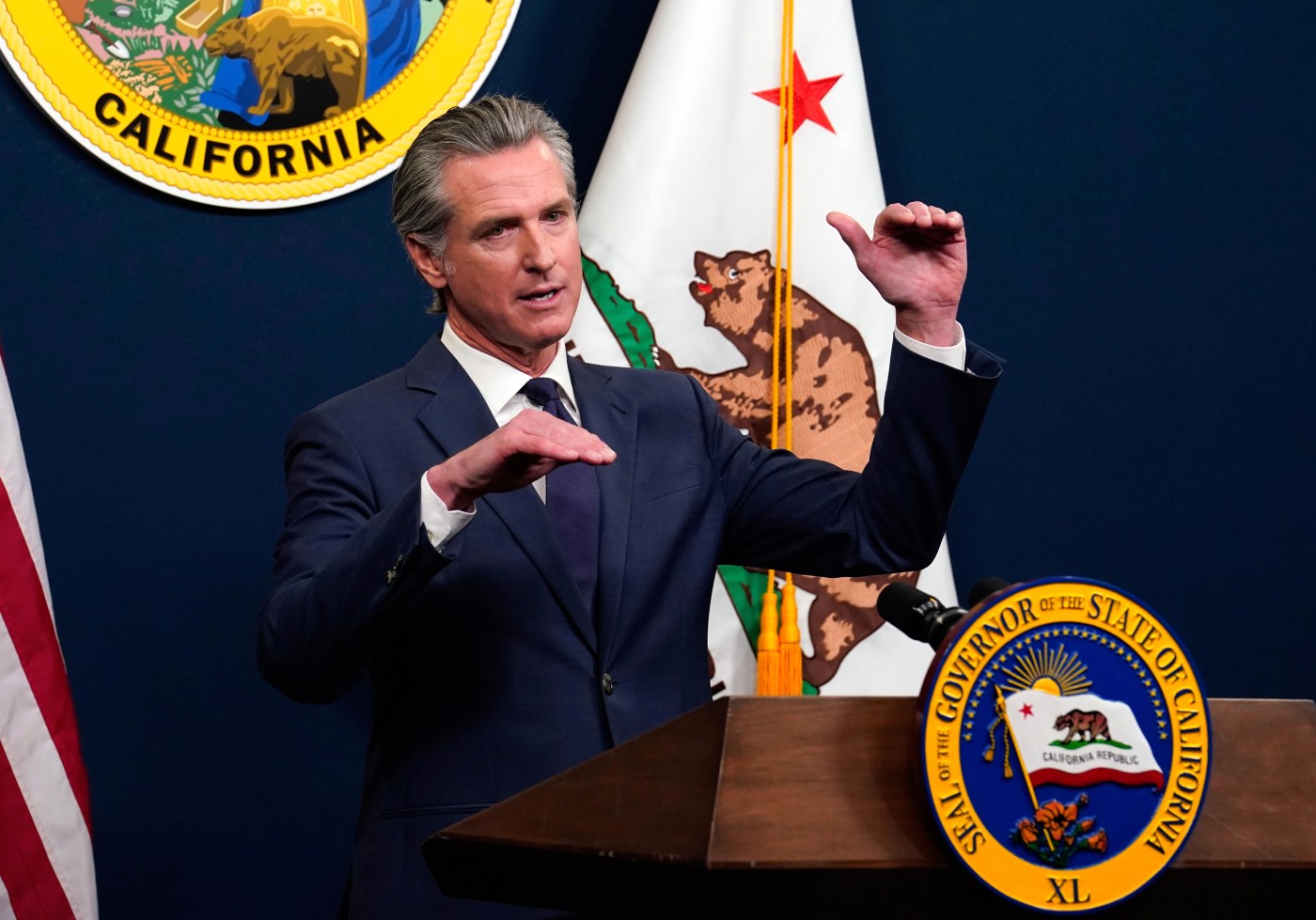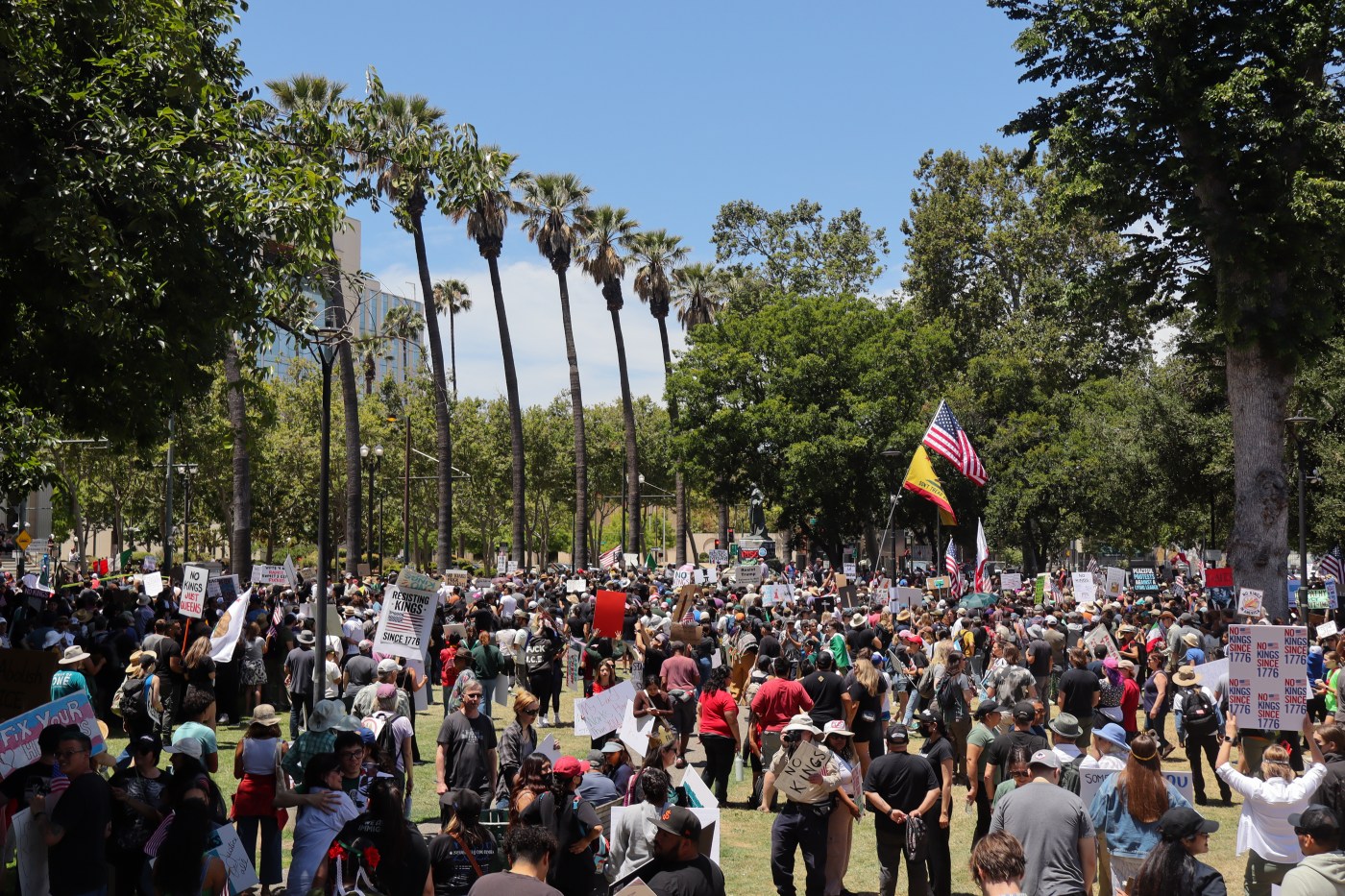When Gov. Gavin Newsom unveiled a revised state budget last week, he irritated — and perhaps alienated — major interest groups allied with his Democratic Party.
They flooded reporters’ email inboxes with critical reaction statements demanding that spending reductions he said were necessary to cover a substantial deficit and other aspects of the budget be blocked.
The loudest reactions came from advocates for the poor and elderly. They decried Newsom’s plan to scale back an expansion of Medi-Cal health care to undocumented immigrants that he had championed last year, as well as his imposition of $100 monthly premiums, elimination of some benefits, limits on at-home care and tighter qualifications for benefits.
“The 2025–26 budget proposal fails to marshal the resources needed to help vulnerable Californians meet basic needs like health care, housing, and food assistance,” the left-leaning California Budget and Policy Center said. “It also falls short in delivering the bold response needed from California’s leaders amid unprecedented federal threats and economic uncertainty.”
However, there were also adverse reactions from public employee unions over Newsom’s intention to hold down state worker raises and from city and county officials over a lack of grants for homelessness. Newsom’s intends to crack down on local governments he deems to be negligent.
Medical care providers dislike both Newsom’s Medi-Cal restrictions and his diversion of funds from a special tax on health care approved by voters last year meant to increase payments for treatment.
Environmentalists are angered by Newsom’s declared intention to fast-track a tunnel beneath the Sacramento-San Joaquin Delta to increase water deliveries to Southern California.
Advocates of Proposition 36, a voter-approved measure to crack down on some crimes that Newsom opposed, decry his failure to include funds for implementation.
The wave of criticism and opposition puts the Legislature on the spot. Those who dislike the budget are demanding that legislators compel Newsom to scale back his proposals as they negotiate a semi-final version of the spending plan over the next four weeks to meet a June 15 deadline. Many legislators owe their careers to the budget critics, particularly unions and environmentalists, and don’t want to alienate them.
Newsom, on the other hand, is approaching lame duck status, with his gubernatorial career having just 19 months remaining. Politically, Newsom can afford to irritate those groups. However, his relatively brief remaining tenure also means he is beginning to lose his sway over legislators, particularly those who will still be in office after Newsom is gone.
Newsom is obviously hoping that, by making budget cuts now to narrow the state’s chronic gap between income and outgo, he can avoid joining the list of ex-governors who left the state’s finances in disarray for their successors. Newsom inherited a state budget from predecessor Jerry Brown that was in pretty good condition, but over the last six-plus years, which included a pandemic, spending growth has outpaced revenue increases.
The Legislature’s budget analyst recently cited an average 9% annual increase in outlays since Newsom became governor, but just 6% in average revenue growth.
Related Articles
Philp: For Newsom, it’s as if California voters never passed Prop. 36
Chabria: Newsom isn’t backing down on health care for immigrants despite threats
Walters: California will face increased tax-increase pressures as Newsom departs
Opinion: How other states are protecting their core services amid budget cuts
Palo Alto reviews proposed $1 billion budget
That has left the state with what budget mavens call a substantial “structural deficit” that the analyst, Gabe Petek, and Newsom’s own budget staff estimate to be $15 billion to $20 billion annually. If it went unaddressed, it would total $42 billion through 2028-29.
Even with the reductions Newsom proposes, projected 2025-26 general fund revenues of $207 billion are still $19 billion short of the $226 billion in spending he proposes. The gap will be covered by loans and transfers from special funds, shifting spending to other pots of money and various bookkeeping gimmicks.
Dan Walters is a CalMatters columnist.





